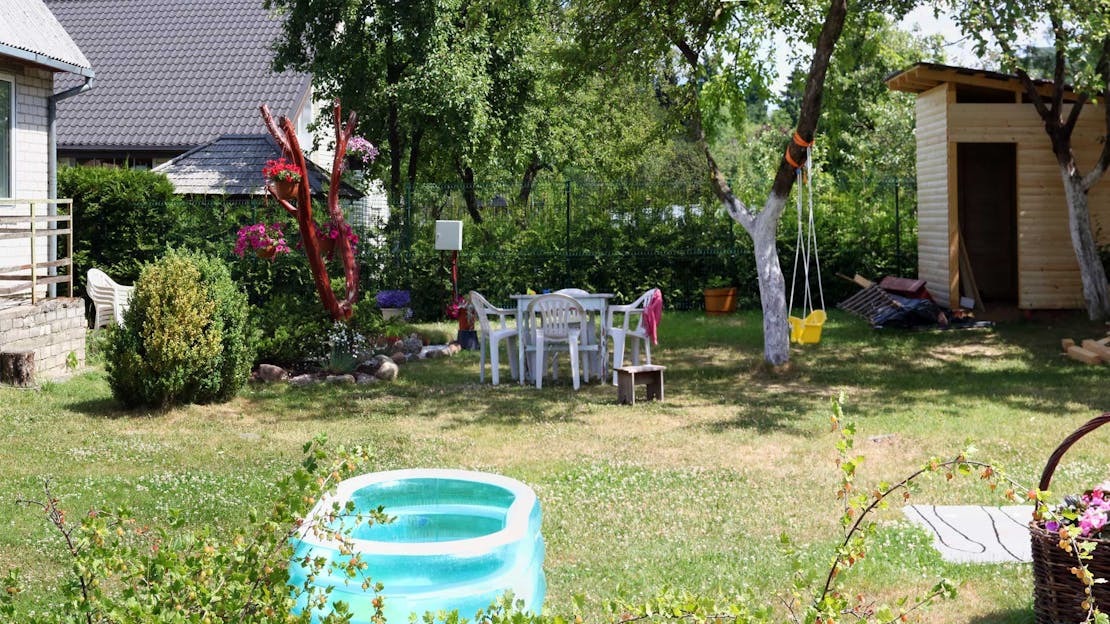
Is my Lawn too Old?
An old lawn becomes very compacted and therefore doesn’t hold air or water well. This means it doesn’t respond well to fertiliser, dries prematurely in the summer, is prone to moss, disease and weeds and readily develops an unhealthy thatch layer.
What is the Problem with an Old Lawn?
The main problem with lawn age is more to do with the soil than the grass. Admittedly adding new grass varieties helps the lawn age better, but it is still the soil that determines the lawn condition.
Over years of rainfall, mowing, and use the soil particles slowly press together squeezing out air spaces. I’m sure you’ve made sandcastles as a kid and have filled your little red (or yellow) bucket with sand and then tamped it down to firm it and make the particles stick together. This is what is happening in the lawn and because the air spaces have been removed the soil is not able to supply oxygen to the grass roots nor store water when it rains. Both these severely compromise the health of the lawn.
How Old is too Old?
Any lawn over 25 years is considered old and will respond less well to treatments and potentially cost more in time and money to maintain. There are exceptions as always.
A lawn that has been well maintained, aerated regularly to remove compaction and over seeded with new seed varieties can easily go on for many decades. Conversely, a poorly maintained lawn or a lawn with high use from children may exhibit compaction and therefore signs of old age after only 10 years.
If your lawn is relatively young, say 5 years or less and is showing signs of compaction then the chances are nothing drastic needs to happen other than giving the lawn a scarify, over seed and feed and lots and lots of aeration.
What are the Treatment Options?
Option 1: Continue as you are and spend more time and money on it than normal with increased feeding, weed killing, watering, aerating and scarifying and still remain disappointed
Option 2: Attempt to recover the lawn with a programme of renovation which would include heavy scarification, aeration, over seeding followed by feeding and possibly topdressing. You should then follow up in the following growing season with an intensive fertiliser, aeration and weed control program. Depending on the condition of the lawn this could make a considerable difference but may actually cost more in time and money than the final option
Option 3: Dig it up and start again. You will then find it very easy and satisfying to maintain and over 3 years this will cost you far less in time and money
Because there is a larger upfront effort required (not cost) in option 3 most people elect for option 2. A few years later they realise how daft they were and dig it up!
CAUTION: Many companies make big money renovating lawns when they should be removed and replaced. You are warned.
How do I Decide?
There is no point in sticking with Option 1. You are here because the lawn is pretty bad so something more radical needs to be done, yes?
Go with Option 2 - Restoring an Old Lawn if:
- The lawn is less than 10 years old
- Hasn’t had heavy use
- Tree roots are not an issue
- Does not have weed grasses
- The broad-leaved weeds that exist are easily controlled by our weed killers
- The lawn is not bumpy and is easy to mow
- The result would be a uniform finish
- There are no other problems that also require work
If you answer NO to any of the above, then the easy way out is to create a new lawn
Check for problem weeds here